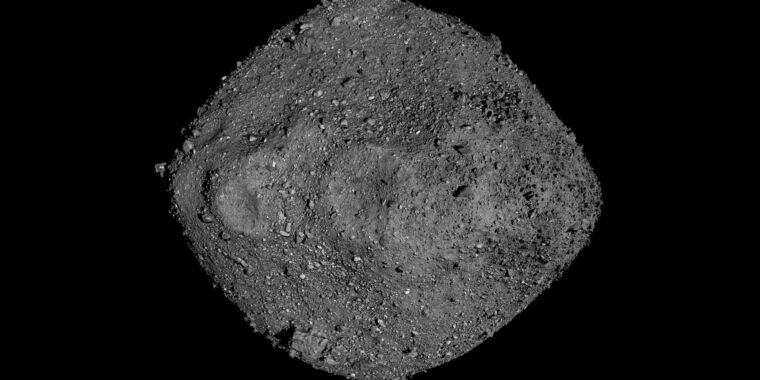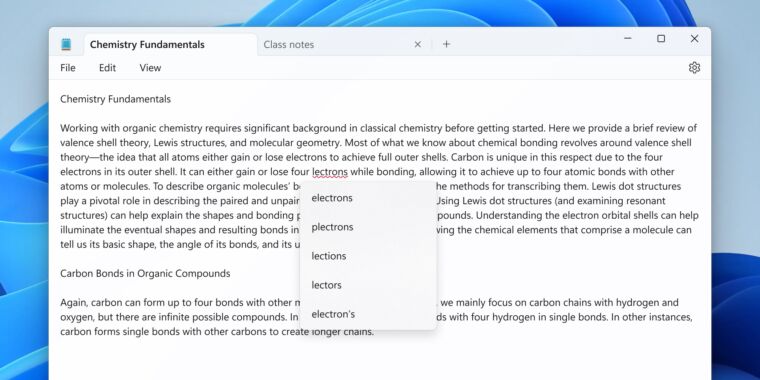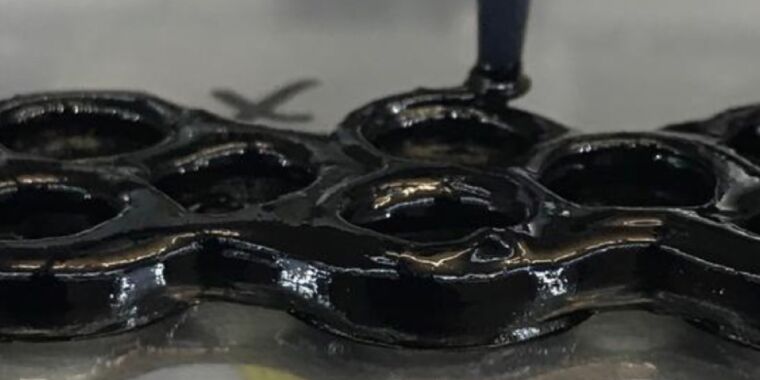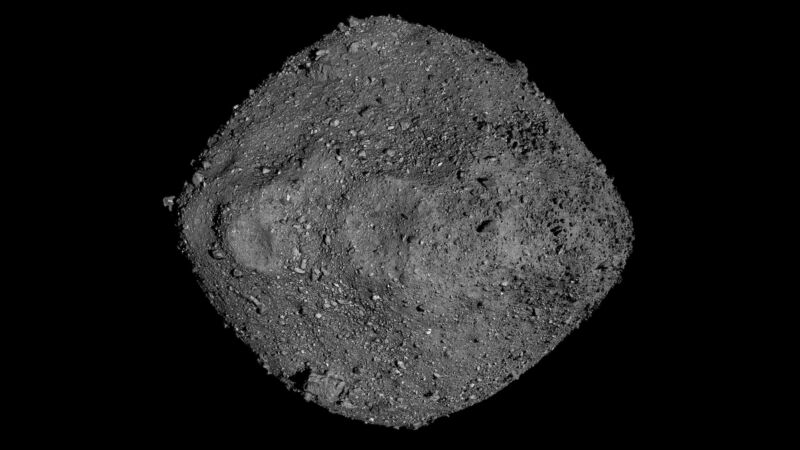
A NASA spacecraft will complete a round-trip journey to an asteroid this weekend, returning to Earth after a seven-year voyage to bring back unspoiled rock specimens from an alien world that could yield insights into the formation of life.
The landing Sunday at 8:55 am local time in Utah (10:55 am EDT or 14:55 UTC) will wrap up a round-trip journey of 4.4 billion miles (7.1 billion kilometers) for NASA’s robotic OSIRIS-REx mission. The return will set into motion another sequence of tightly-choreographed events to secure the asteroid sample capsule, fly it halfway across the country to a NASA facility at the Johnson Space Center in Houston, then open it up to reveal the bounty inside.
“The spacecraft trajectory and performance have just been spot on,” said Sandra Freund, OSIRIS-REx’s program manager at Lockheed Martin, which built and operates the spacecraft on behalf of NASA. “We have just a few remaining steps before we have Bennu samples on the ground.”
Dante Lauretta, the mission’s principal investigator based at the University of Arizona, says he has imagined Sunday’s events for nearly two decades. NASA picked OSIRIS-REx for development in 2011, ending a seven-year cycle of brainstorming, proposals and reviews that began with a meeting in a Tucson bar in 2004.
At that meeting, Lauretta and Michael Drake—the mission’s original lead scientist who died months after his concept won NASA support in 2011—met with an engineer from Lockheed Martin and sketched out what would be required to collect and bring home pieces of an asteroid.
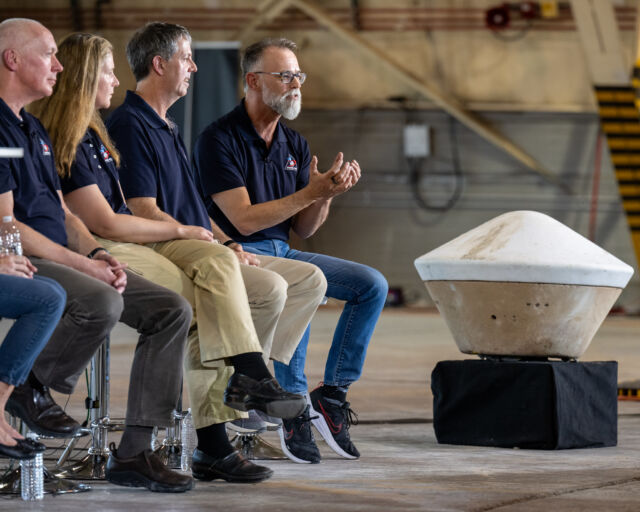
OSIRIS-REx is an acronym that stands for Origins, Spectral Interpretation, Resource Identification-Regolith Explorer. That’s a lot to unpack, but it’s sufficient to say the mission is all about bringing asteroid material back to Earth for detailed analyses in research laboratories, which boast capabilities far beyond even the most sophisticated science instrument on a spacecraft.
Drake’s team proposed the OSIRIS-REx mission concept to NASA’s New Frontiers program in 2008, when they competed with other planetary mission proposals for agency funding. Three years later, scientists got the call that OSIRIS-REx won the competition. Lauretta took over the mission after Drake’s death, shepherding OSIRIS-REx through development and its launch aboard a United Launch Alliance Atlas V rocket on September 8, 2016, then managed the two-and-a-half year science campaign when the spacecraft reached asteroid Bennu, a boulder-strewn world approximately the size of a small mountain.
In the chaotic early history of the Solar System, soon after the Sun flashed to life 4.5 billion years ago, a disk of gas and dust around the newborn star started aggregating together—first into grains of dust, then into snowflake-like particles that gradually came together to form asteroids and planets. Scientists think Bennu is a leftover relic from that era.
“The biggest question, the one that drives my scientific investigations, is the origin of life. What is life? How did it originate? And why was it on Earth that it occurred?” Lauretta said. “We believe that we’re bringing back … maybe representatives of the seeds of life that these asteroids delivered at the beginning of our planet, that led to this amazing biosphere, biological evolution, and to us being here today to look back at that amazing history.
“We’re literally looking at geologic materials that formed before the Earth even existed,” Lauretta said. “I call these the grandfather rocks, the ones that really represent our origins and where we came from.”
Lauretta appointed himself to be part of the team that will venture out to the remote Utah desert to greet the asteroid specimens after Sunday’s landing. He and other scientists will gather soil and water samples from the desert landscape, so researchers will know if there’s any contamination of the asteroid material held inside the Earth return vehicle.
“I wanted to personally be out there to greet these pieces of Bennu to our home planet, welcome them to the curation facility at Johnson Space Center, and get them ready for the adventure we’re about to put them on,” Lauretta said.
You can watch the return live beginning at 10 am EDT (14:00 UTC) using the video link embedded here.
The $1 billion mission is bringing home the largest pristine sample of extraterrestrial material ever returned from beyond the Moon. The specimens are buttoned up inside an armored capsule that weighs about 100 pounds (46 kilograms), currently mounted to the side of a mothership about the size of an SUV.
The sample carrier will separate from the OSIRIS-REx mothership early Sunday, then plunge through Earth’s atmosphere and unfurl a parachute to slow for landing in the remote desert southwest of Salt Lake City at the US military’s Utah Test and Training Range.
What’s coming back?
Scientists aren’t sure of the treasure that waits inside the sample return capsule. OSIRIS-REx captured what was there there when the spacecraft made a touch-and-go landing on asteroid Bennu on October 20, 2020, then fired a bottle of compressed gas into the loose gravel-like material that covers Bennu’s surface.
The burst of gas funneled rocky material into a sampling head affixed to the end of a robotic arm sticking out in front of the spacecraft. Then OSIRIS-REx backed away from Bennu. It didn’t take long for scientists to realize that Bennu threw them a curveball.
The asteroid material at the sampling site was less dense than researchers predicted—about one-sixth the density of a typical rock on Earth—and the touch-and-go landing launched a spray of particles around the spacecraft.
Lauretta compared the dynamics of the sampling run as akin to dropping yourself into a ball pit at a children’s playground. “It literally is a droplet made out of rock, gravel and boulders that are barely held together by their own microgravity.”
So much material went into the sampling system that its lid was wedged open, and smaller pieces of rock started floating out.
That prompted ground teams to accelerate their plan to seal the sampling system inside the return capsule, ensuring no more specimens were lost to space. The capsule is designed like a nesting doll, with a carbon-based ablative heat shield on the outside to protect it from the scorching temperatures of re-entry back into Earth’s atmosphere. Inside the heat shield is the sample canister itself, which envelops the overfilled sampling head detached from the end of the OSIRIS-REx robot arm.
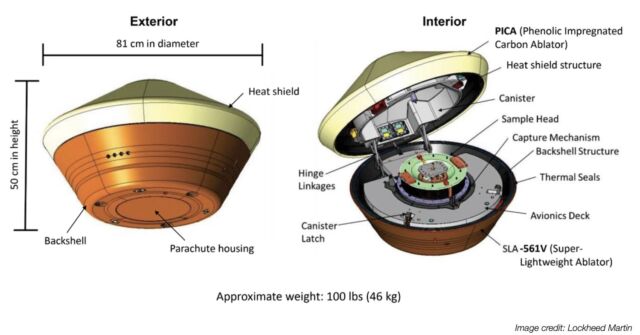
Ground teams estimate they retrieved about 250 grams of material, probably enough to fill about one cup, depending on the exact density of the rocks. That is four times the required sample mass. Scientists won’t know the precise mass of the asteroid sample until they transport the canister to a dedicated laboratory in Houston and open it up next week.
Bennu is classified as a near-Earth asteroid because its orbit around the Sun regularly brings it close to our planet. That made Bennu an attractive target because it’s part of the population of asteroids that could threaten Earth, and one that was relatively easy for OSIRIS-REx reach, in terms of the amount of energy needed to get there and get back home.
This asteroid had another characteristic that attracted scientists: It is a carbon-rich world. Telescopic observations showed it might be made up of organic molecules. Asteroids like Bennu could have delivered these building blocks of life to Earth. Lauretta hopes that’s what is inside the sample return capsule on OSIRIS-REx. He’ll soon know for sure.
“One of the key objectives of OSIRIS-REx is to characterize any organic molecules that may have been delivered to the early Earth by these carbon-rich bodies,” Lauretta said. “We expect that we’ll find what we call monomers, or very simple molecules, for example, amino acids, which many people may be familiar with, because they make up our proteins. If you take protein supplements, you can often see the list of amino acids that are included in that.”
Regardless of the precise composition of the Bennu sample, the material is almost certainly primitive and similar to charcoal in color, appearing much as it did soon after the formation of the Solar System.
“What would be really exciting is if we saw any evidence that those amino acids had started to link together to form a chain, which we call peptides,” he said. “That would give us some indication that towards the origin of life, protein evolution may have occurred. I want to say that’s a hope. It’s probably a long shot, but it would be a spectacular science result if we were to discover something like that.”
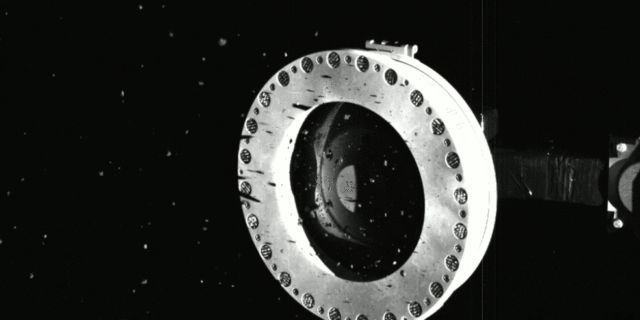
Even if there’s no immediate “eureka moment” from the samples, the material will be distributed to scientists around the world, with each research team analyzing the specimens in slightly different ways. Some of the sample will remain in storage so future scientists, equipped with even better instruments, can take a look at Bennu’s bounty decades from now. About 4 percent of the total sample will go to Canadian scientists, who supplied one of the scientific payloads on OSIRIS-REx, and 0.5 percent will go to the Japanese space agency in recognition of the partnership on that country’s Hayabusa 2 mission, which returned to Earth with a smaller sample from a different asteroid in 2020.
How is it is coming back?
OSIRIS-REx is right on course for Sunday’s landing. A brief firing of the spacecraft’s thrusters September 17 put it on track for a bullseye landing in a 250 square-mile (650 square-kilometer) zone at the Air Force’s Utah Test and Training Range. This facility is co-located with the Army’s Dugway Proving Ground in the Great Salt Lake Desert.
No more burns are needed to adjust the trajectory, according to Freund, the Lockheed Martin program manager for the mission. Early Sunday, around 4 am EDT (08:00 UTC), NASA and Lockheed Martin engineers will evaluate the status of the spacecraft for a final time before giving the green light to release the sample return capsule from the mothership, an action that can’t be undone.
If there’s something amiss, officials have the option of aborting the sample return and waiting two more years for OSIRIS-REx to again be in position to drop off its precious cargo at Earth.
But all signs, as of Friday, point to officials giving the “go” to proceed with the release of the sample carrier, which doesn’t have any way to change its course after leaving the OSIRIS-REx mothership. Once the capsule is free, when it’s flying about a quarter of the distance to the Moon, the mothership will fire its thrusters for a divert maneuver to steer onto a course that will take it just above Earth’s atmosphere, saving the probe from destruction for an extended mission to rendezvous with another asteroid, named Apophis, as it makes a close flyby of Earth in 2029.
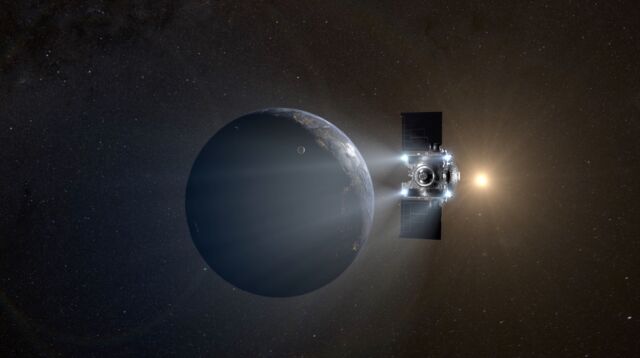
Then there’s a nearly four-hour wait until the sample capsule slams into the uppermost fringes of the atmosphere at a velocity of 27,650 mph (12.3 kilometers per second). Aerodynamic resistance will cause temperatures outside the heat shield to build up to 5,000 degrees Fahrenheit, half as hot as the surface of the Sun. At the same time, deceleration from the atmosphere will reach a whopping 32 Gs as it falls to Earth heading west to east over California, Nevada, and Utah.
An accelerometer inside the battery-powered sample capsule will detect when it hits the atmosphere, starting a timer to send the command to deploy a drogue parachute about two minutes later. Then the 24-foot-diameter (7.3-meter) main parachute will open at an altitude of about 5,000 feet (1,500 meters) to slow the capsule to a relatively gentle touchdown speed of 10 to 11 mph (about 17 kilometers per hour).
Several recovery helicopters dispatched from the military range will hover over the capsule to make sure it is safe to approach. Then Lockheed Martin technicians will secure the craft, wrap it in Teflon bags, and put it into a safety net suspended beneath one the helicopters to carry it to a nearby clean room facility. At that location, experts will remove the capsule’s aerodynamic shell—it could be caked in mud due to recent rains at the Utah landing site—and put the sample canister under a flow of nitrogen gas to ensure it remains free of terrestrial contaminants.
Here’s a timetable of Sunday’s events:
• 6:42 am EDT (10:42 UTC): OSIRIS-REx releases the sample return capsule
• 7:02 am EDT (11:02 UTC): OSIRIS-REx spacecraft performs divert maneuver to continue with extended mission
• 10:42 am EDT (14:42 UTC): Sample return capsule enters Earth’s atmosphere
• 10:43 am EDT (14:43 UTC): Peak heating of more than 5,000 degrees Fahrenheit
• 10:44 am EDT (14:44 UTC): Drogue parachute deploys at 102,300 feet (31.2 kilometers) above the surface
• 10:45 am EDT (14:45 UTC): OSIRIS-REx mothership soars 484 miles (779 kilometers) above Earth
• 10:50 am EDT (14:50 UTC): Main parachute deploys at 5,050 feet (1,539 meters) above the surface
• 10:55 am EDT (14:55 UTC): Sample return capsule lands in Utah
The animation below, produced by NASA, gives an idea of what to expect during Sunday’s asteroid sample return.
Once it is safely on Earth, the OSIRIS-REx ground team will prepare the canister for a plane ride on a US military cargo aircraft from Utah to Houston as soon as Monday. After it arrives inside a specially-built super-clean curation facility at NASA’s Johnson Space Center, scientists will open the lid and finally get their hands on pieces of Bennu, probably some time next week.
Getting their hands on the asteroid material is a figure of speech, of course. The scientists in Houston will wear clean room gowns, and will only work with the asteroid samples through a glovebox. They will meticulously catalogue and sort the asteroid pebbles to be sent to more than 200 researchers around the world, who will examine the specimens and start writing peer-reviewed science papers to be published over the next few months.
But there’s a team in Houston who will get the first crack at analyzing what’s inside. Mission officials believe there’s likely some dust or loose material that could be accessible right after opening the lid—perhaps the stuff seen leaking out of the sampling unit back in October 2020.
“Any dust that’s visible as soon we open up the canister, which might be as early as September 26, there’s going to be a sample wipe taken, and that material is immediately being delivered to a quick look analysis team ready at Johnson Space Center,” Lauretta said.
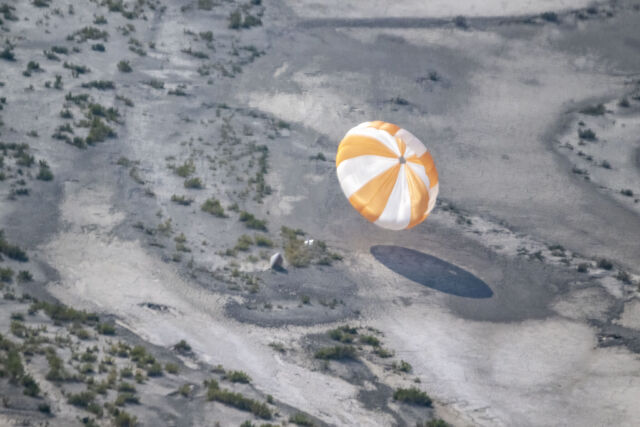
Something could go wrong during any of these steps. The parachute deployment sequence is one moment where Lauretta said he’ll feel some tension.
“As soon as I see that parachute unfurl, I’ll know we’ve made it,” he said. “At that point, I think it’s all downhill from there. Everything we’ve rehearsed, getting it out of the field, getting it to the clean room, getting it on the airplane, getting it into the curation lab. At that point, it’s just fun and games, and sample science.”
The sample capsule on OSIRIS-REx is nearly identical to the one used on NASA’s Stardust mission, which successfully returned to Earth in 2006 with dust samples from the coma of a comet. But another NASA sample return mission, named Genesis, cratered when it came back to Earth in 2004 with particles from the solar wind. Its parachutes never deployed, and the capsule ruptured when it impacted the Utah desert. After painstaking effort, scientists were able to salvage some science from the mission.
One more potential snag is also on the horizon. The federal government could enter a shutdown if Congress does not pass a new budget and President Biden doesn’t sign it by midnight on October 1. With the intense political wrangling in Washington, this appears increasingly likely.
In the event of a government shutdown next month, some of the steps needed to prepare the asteroid sample for analysis will “possibly be delayed,” said Lori Glaze, head of NASA’s planetary science division.
“We will make sure, first and foremost, that this sample is safe and not at risk,” she said. “We have time for that after it returns to Johnson Space Center on September 25. The sample has waited for more than 4 billion years for humans to study it, and if it takes us a little longer, I think we’ll be OK.”

